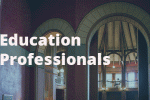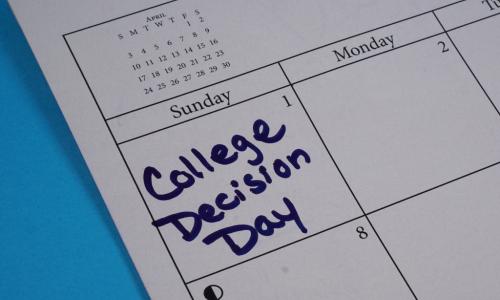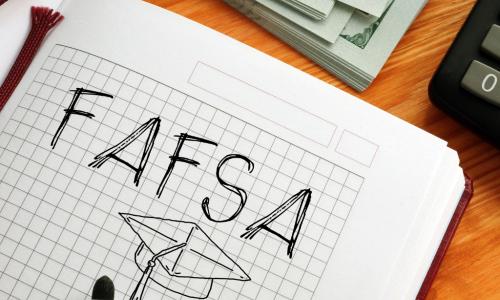VSAC transferred the servicing of your Federal Student loans to American Education Services and the guarantee of all VSAC Federal Student loans to the Trellis Company, an approved Federal Guaranty Agency, over the weekend of March 16th. CLICK HERE for more information.
6 Essentials for Vermonters with federal student loans

Federal student loan payments have resumed. Don’t panic! VSAC offers tips to help you stay on track.
The U.S. Department of Education’s COVID-19 relief program for federal student loans has ended. Student loan interest resumed on September 1, and payments on federal student loans are due starting now.
As federal student loan payments resume, VSAC has six important messages for Vermonters with federal student loans who may be understandably anxious about what this could mean for their budgets.
1. Reconnect with your loan program and stay in touch.
When it comes to financial matters, ignorance is never bliss. Stay informed by taking the following steps.
- Know your loan servicer (it may have changed during the payment pause) and stay in contact.
- Not sure? Log in to your Dashboard at Federal Student Aid.
- If you can’t log in, call 1-800-4-FED-AID (1-800-433-3243) for loan servicer information.
- Be sure your contact information is up to date so you receive important notifications.
- Review what your payment will be and set up auto debit.
- Never pay for help filling out forms or applying for forgiveness. With your servicer, help is always FREE.
2. If you hold a federal student loan, look into an Income Driven Repayment Plan.
An income-driven repayment plan sets your monthly student loan payment at an amount that is intended to be affordable based on your income and family size. The Department of Education offers four income-driven repayment plans, and most federal student loans are eligible for at least one of them.
Scott Giles, President and CEO of VSAC, suggests that Vermonters start by looking into the Saving on a Valuable Education—or SAVE—Plan, which is the government’s brand-new income-based repayment plan.
“This plan is going to provide borrowers with the quickest path to loan cancellation,” Giles says. “There are some income and family-size components to determining eligibility, but the basic premise is this: your income will likely go up and down through the course of your life, and under this program, your loan payment can go up or down along with it. Borrowers with original principal balances of $12,000 or less will receive forgiveness of any remaining balance after making ten years of payments, with the maximum repayment period before forgiveness rising by one year for every additional $1,000 borrowed. The maximum repayment period is capped at 20 years for those with only undergraduate loans and 25 years for those with any graduate school loans.”
Under the SAVE Plan, monthly payments will be lowered to as low as 5% of a person’s discretionary income, and their loan balance won’t grow because of unpaid interest, opening the door for eventual loan forgiveness.
You can find more details on the SAVE Plan and the other three income-based repayment plans, including full eligibility requirements for each program and how to apply, at the Student Aid site
3. If you work in a public service job, explore the Public Service Loan Forgiveness Program.
The Public Service Loan Forgiveness (PSLF) program is a federal program that supports borrowers that are employed by a government or not-for-profit organization. This federally funded program eliminates student loan debt after a borrower has been employed by an eligible organization, and has been making loan payments, for 10 years.
Giles says this program is especially important in Vermont, where more people per capita are employed in government and not-for-profit organizations than in most other states.
Further, Giles notes that, if paired with the SAVE plan (when possible), this could allow some borrowers to pay $0 a month, with debt cancellation possible in the future.
Borrowers should note that the PSLF program is available only for federal loans held with the U.S. Department of Education's Direct Loan Program. Private education loans are not eligible, and if you have federal education loans with VSAC (which are part of the Federal Family Education Loan Program or FFELP) and want to pursue PSLF, you will need to consolidate with the U.S. Department of Education's Direct Loan Program. For more information, you can visit Student Aid’s loan consolidation page, or contact a VSAC loan coach for advice.
Finally, if you aren't sure if your employer qualifies for the PSLF program, you can use Student Aid's PSLF tool to check (you will need your employer's Federal Employer Identification Number, which you can find on your IRS Form W-2). You can find more information about PSLF on the VSAC website or on the Student Aid website.
4. If you’re a new graduate who’s working in Vermont, check into the Green Mountain Job & Retention program.
Under the Green Mountain Job & Retention Program, the State of Vermont will repay up to $5,000 of your outstanding college debt, if you earned a Bachelor’s degree from a Vermont college or university in the spring of 2023 and agree to work in Vermont for at least two years.
Funding is still available for 2023 graduates, and you have until December 1 to apply (though funding is awarded on a first-come, first-served basis). The application is simple—recent awardees say it took about 15 minutes—and it asks for basic information from you and from your employer.
The program may also be extended to students in the graduating class of 2024 who meet the same criteria.
The Green Mountain Job & Retention Program program is jointly administered by VSAC and the University of Vermont.
5. If you miss a payment in the first year, it won’t affect your credit.
For all borrowers, the Department of Education is providing a one-year grace period in which borrowers who miss payments will not have their credit impacted. However, since interest began accruing on September 1, missed payments will mean the size of the loan will grow.
6. Have questions? Give VSAC a call.
Giles encourages Vermont borrowers to reach out to VSAC's loan coaches, who can answer your questions and help you make a plan for your individual circumstances.
“This can be a complicated process, particularly if you've not made payments for the last three years,” Giles says. “Call us, have your student loan information handy, and we'd be happy to walk you through your options.”
You can connect with VSAC at 802-655-4050, or via the Contact VSAC page on our website.





